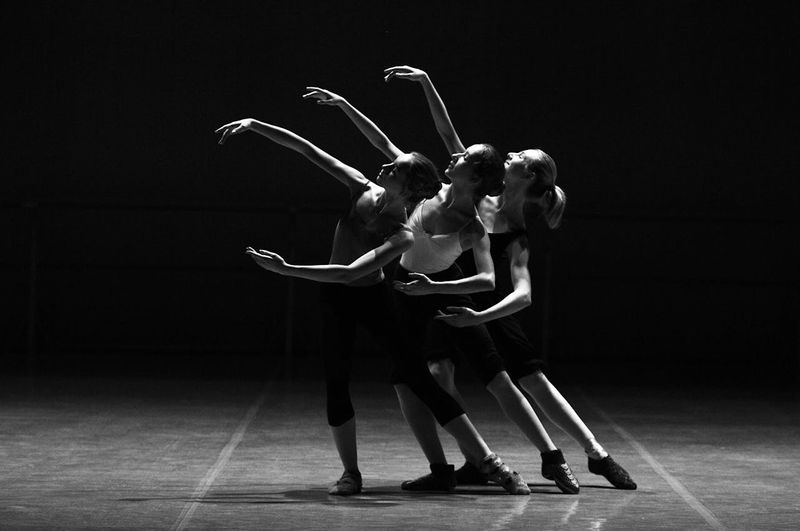Often presumed to be a form of entertainment or artistic expression, dance holds a profound capacity for healing, both mentally and physically. Across cultures and centuries, it has been a cornerstone of celebration, mourning and ritual, offering a therapeutic channel for emotional expression and physical well-being. And, why not?
This art form is so vast and diverse it never restricts itself to any kind of professionalism. It embodies an emotion that is accessible to all, granting complete freedom to anyone who wishes to partake in its practice. Dance, in its essence, is a form of therapy that demands nothing more than genuine emotion. This inclusivity makes it a universally embraceable medium, offering therapeutic benefits to all, regardless of skill level.
Recognised for its holistic healing powers — Dance therapy, leverages movement to foster emotional, social, cognitive, and physical integration. Techniques such as Mirroring, Attunement, Integrated Development, and Authentic Movement are pivotal in dance therapy. These methods not only encourage personal growth and understanding but also facilitate a deeper connection with others by echoing movements, empathising through movement, progressing through developmental challenges, and revisiting early experiences through bodily sensations. These techniques underscore the therapy's capacity to bridge mind, body, and spirit, offering a unique pathway to healing and self-discovery. So, let’s hop on to explore the expanse of dance therapy.
Dance therapy — The therapeutic essence of movement

At its core, dance is a holistic therapy that integrates the body, mind, and spirit. It allows for the expression of emotions that words cannot capture, providing a safe space for individuals to explore and release their deepest feelings.
The rhythmic movements of dance can elevate one's mood, reduce stress and improve overall mental health. By engaging in dance, individuals can experience a sense of liberation, as they momentarily let go of their daily burdens and immerse themselves in the joy of movement.
Impact of dance movement therapy on physical health
Beyond its mental and emotional benefits, dance offers significant physical health advantages. Yes, it is a form of aerobic exercise that improves cardiovascular health, increases stamina, strengthens the body, and enhances flexibility and balance.
Regular participation in dance can lead to improved physical fitness, weight management, and a reduced risk of chronic diseases such as heart disease and diabetes. Moreover, the varied movements involved in dance can aid in rehabilitation, helping individuals recover from injuries by gently encouraging the body's natural healing processes.
The social connection of dance movement therapy
Dance fosters social interaction and community building. It breaks down barriers, enabling people from diverse backgrounds to come together and share a common experience. Through group dance activities, individuals can feel a sense of belonging and support, essential elements in mental health and well-being. The social aspect of dance can combat feelings of isolation and loneliness, contributing to improved mood and self-esteem.
How dance therapy promotes personal growth and self-discovery?
Engaging in dance therapy can be a journey of self-discovery and personal growth. It encourages self-expression, creativity, and confidence. As individuals explore different dance styles and movements, they may discover new aspects of their personality and develop a deeper understanding of their body's capabilities and limitations. This process can lead to enhanced self-awareness and self-acceptance, key components of emotional and psychological well-being.
Types of dance therapy
Authentic Movement
Originating in the expressive arts therapy tradition, Authentic Movement focuses on the experience of movement generated from within. In this approach, participants close their eyes and move in ways that reflect their internal feelings and thoughts, often in the presence of a witness. This practice fosters a deep, introspective journey, allowing individuals to explore and integrate unconscious material into their conscious awareness, promoting personal growth and emotional healing.
Mirroring

Mirroring dance therapy is a powerful tool for building empathy, self-awareness, and interpersonal connection. This technique involves one person, usually the therapist, copying or mirroring the movements of another. The act of mirroring can serve as a non-verbal form of communication, allowing individuals to see themselves through the eyes of another. This process can be profoundly validating, helping participants recognize and accept their feelings and actions, fostering a deeper sense of empathy and understanding towards themselves and others. Mirroring can be particularly beneficial for individuals working through issues of isolation, disconnection, or emotional blockages.
Attunement
Attunement dance therapy focuses on aligning and synchronising the therapist's movements with those of the client, creating a harmonious interaction that goes beyond mere imitation. This approach emphasises the emotional and energetic exchange between individuals, facilitating a deep sense of connection and understanding. Through attunement, therapists can subtly guide clients towards new ways of moving and being, encouraging emotional release and the exploration of new emotional landscapes. This method is especially effective in nurturing relationships and promoting trust, making it ideal for those who have experienced trauma or emotional detachment.
Integrated Development
Integrated Development dance therapy is a holistic approach that aims to unify physical, emotional, and cognitive growth. This method incorporates a variety of movement activities designed to enhance motor skills, emotional expression, and social interaction. By addressing development across these domains, Integrated Development supports the individual's overall growth, fostering a sense of balance and coherence. This type of therapy can be particularly impactful for children and adults with developmental challenges, as it promotes skill acquisition, self-expression, and a strengthened sense of self.
The cultural and spiritual significance of dance
Dance is deeply ingrained in the cultural fabric of many societies, especially Indian, serving as a medium for storytelling, tradition preservation, and spiritual practice. It can be a powerful tool for connecting with one's cultural heritage and exploring spiritual dimensions, offering a sense of grounding and identity. The spiritual aspect of dance, present in many traditional and ritualistic forms, can provide a profound sense of connection to something greater than oneself, fostering a sense of peace and contentment.
So, let’s dance, not just with our bodies, but with our hearts and souls, and discover the profound healing power that lies within this timeless expression of human experience.




_1681046990421_thumb_300.png)